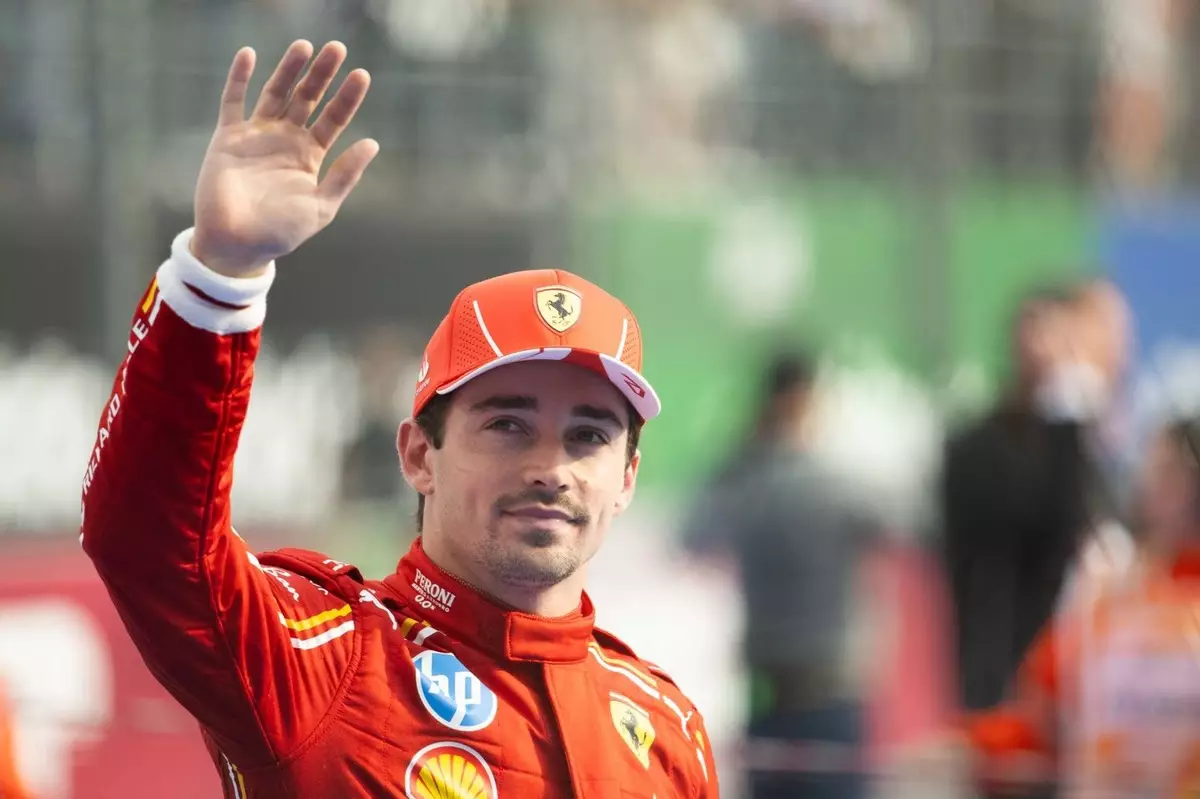The motorsport world is no stranger to controversy, and the latest incident involving Ferrari driver Charles Leclerc following the Mexico Grand Prix is a testament to this reality. The FIA’s decision to evaluate potential disciplinary action against Leclerc for swearing during a press conference raises significant questions about the balance between driver expression and regulatory authority.
In the aftermath of the recent Mexico City race, where Leclerc finished in third place, he was asked a seemingly innocuous question about his driving experience at a challenging corner. His candid response included an expletive, which he later acknowledged with a light-hearted apology, aware of the FIA’s recent scrutiny of driver language. This incident unfolds in a broader framework where the FIA appears to be actively policing offensive or inappropriate remarks in a bid to protect the integrity of the sport and its officials from potential backlash often fueled by passionate fanbases.
Leclerc’s response came just weeks after Max Verstappen of Red Bull received a community service penalty for similar behavior. Verstappen had chosen to boycott FIA press conferences post that incident, a move that drew attention to the mounting pressure on drivers to adhere to a higher standard of decorum in public forums. The juxtaposition of these reactions reveals a developing narrative where drivers are caught in a web of accountability for their words, complicating the often unfiltered nature of motorsport journalism and dialogue.
The FIA’s actions are part of a larger initiative to maintain professionalism and respect within motorsport, particularly in how drivers communicate with the press. Article 12.2.1k of the FIA’s International Sporting Code explicitly prohibits any language deemed damaging to the organization’s reputation or that could undermine the sport’s values. Consequently, Leclerc’s remarks fall under scrutiny as a potential violation of this rule, prompting an investigation that could either reaffirm the FIA’s stance on driver conduct or overhaul how such instances are handled moving forward.
This initiative also stems from the FIA president Mohammed Ben Sulayem’s comments regarding the importance of managing the narrative surrounding drivers, particularly in an era where social media amplifies both support and criticism. The FIA seeks to ensure that drivers remain ambassadors of the sport, reducing instances where fan passion erupts into unacceptable behavior directed at officials or other figures within the racing community.
However, this crackdown raises pertinent questions about the nature of freedom of expression within the high-stakes context of Formula 1. The sport has long been characterized by candidness, often driven by adrenaline and the high-pressure environment racers face. For drivers like Leclerc and Verstappen, navigating this delicate boundary between honesty and regulatory compliance presents an ongoing challenge.
Leclerc’s humorous acknowledgment of his slip-up— „Oh, no, oh no! I don’t want to join Max!“—might suggest a desire to maintain a connection with fans, who often appreciate authenticity over scripted responses. This incident shines a light on the evolving relationship between drivers, audiences, and governing bodies, indicating that while the FIA aims to promote respectful communication, it must also consider the implications of stifling the authentic voice of athletes.
As discussions continue among FIA officials regarding the course of action to take against Leclerc, the outcome of this situation remains uncertain. The governing body may choose to let it slide, taking into account the driver’s multiple apologies and the context of his comments, or they may proceed with formal proceedings. The approach taken by the FIA could set a precedent for how future transgressions are managed, affecting not only the drivers but the culture of communication within motorsport as a whole.
This incident encapsulates the ongoing struggle to balance the vibrant, spontaneous nature of competitive racing with the need for decorum and mutual respect within a structured regulatory landscape. How the FIA handles this case will inevitably influence the future discourse surrounding both driver conduct and the overarching ethos of the sport.


Napsat komentář